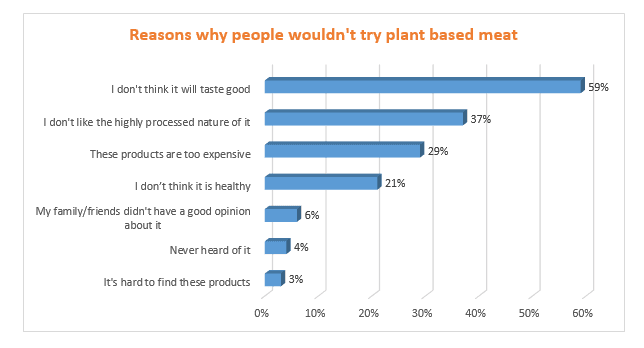Redefining Protein: Exploring the World of Alternative Protein Sources
In countries of economic wealth, consumer interests are shifting towards non-meat-based protein options. New entrants taking note of the situation are investing and developing new technologies and ingredients in an attempt to solidify their place in the alternate-protein space. Interest in alternate proteins grew gradually up to 2007, and then accelerated afterwards.
CPG (consumer-packaged goods) and food manufacturers are required to invest in the capabilities to develop and manufacture alternate-protein products. There are four alternate protein profiles promising opportunities:
Plant Protein: This type of protein is derived from protein-rich seeds through dry or wet fractionation, a process of breaking down an amount of mixture into different “fractions”, allowing to isolate the protein component of a food substance. These include grains, legumes, nuts, chickpeas, among others.
Insect: Out of 1.4 million animal species described on earth, approximately 1 million are insects, further among which 5000 species are considered harmful to crops, livestock or human beings. These insects are edible, the cheapest and good source of protein. Beetles are the most common insects eaten worldwide. Some food producers are milling crickets for flour and are also exploring ways to use the grasshopper as an edible insect source.
Mycoprotein: It is a protein that comes from a fungus, it includes mushrooms, parasites, and yeast. Fermentation, a process where harmless bacteria change the form of a food over time, is used to produce mycoproteins. Food companies use large containers called fermenters, adding specific amounts of water, sugar, and other chemicals to help it grow. Beer, yogurt, and more food are made using similar methods. Fungi contains 40% protein, is high in fibre, limited carbohydrates, and no cholesterol.
Cultured meat: Cultured meat or lab grown meat is produced by using tissue culture technology, a process in which a small sample of animal cells is collected and then those cells are cultivated outside of the animal’s body in vitro. Lab grown meat is genuine animal meat, made of the same cell types and arranged in a similar structure as animal tissues, eliminating the need to raise and farm animals for food.
Scientists have been working on this protein since 2013, after the first cultivated meat burger was unveiled on live television. The industry has grown since, to more than 60 companies on 6 continents, backed by more than $ 450 million in investments.
Rise of Alternative Proteins
Livestock farming is responsible for 14.5% of the world’s carbon emissions. Out of all the habitable land on the planet, 46% of land is used for agriculture and a further 77% of the land used for agriculture is used for livestock farming, despite livestock only contributing 18% to global calorie supply and 37% of total protein. Oceans are depleted of wild fish stocks due to overfishing, leading fishers to go deeper into the ocean to catch more fish, leading those species closer to extinction. Further, an estimated 50 billion chickens and 300 million cows are slaughtered for food each year. It has raised concerns for environmental as well as animal welfare. To provide a solution to this problem, companies are developing products meeting all the nutrition needs, tastes, and similar experience in every aspect without compromising environmental and ethical considerations.
Consumers’ rising interest is partly a result of health concerns, as few studies have shown the adverse negative health effects of animal meat, particularly red meat. Consumers are looking to switch over to plant-based diets, driving innovation in the food industry to provide alternate sources of protein conventionally acquired through animal meat.
The expected market size of alternative proteins is forecasted to reach $ 193.75 billion in 2028 from $ 60.45 billion in 2021 at a CAGR of 18.5%.

Conclusion
The alternative Proteins industry claims to provide a good economic choice, contributing to a sustainable environment and providing a ‘healthy alternative’ source of protein. At the moment, there is a lack of industry regulations and the necessary production capabilities required, nor do they know where to focus their efforts. Allergies associated with plant and insect-based alternative proteins along with the nature of the production process and the use of additives result in mistrust among consumers of the products.
Continuous growth in the demand for plant-based protein over the past decade and the forecasted growth has shown that the industry is poised to mature in the future and will solve many of the challenges it faces today.
Author: Abhishek Saini
